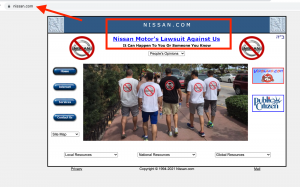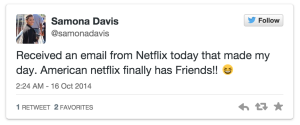
Social media sites have revolutionized the way that businesses big and small interact with the general public. Sites like Facebook and Twitter have become the main forum for everything from advertising and public relations to customer support and market research.
Around 92% of global businesses send out at least one tweet each day, while 80% of online marketers report that social media has succeeded in boosting their traffic.
So the potential for communicating meaningfully with your target market is huge and growing all the time, but there are countless examples of even the biggest and savviest of global companies getting things very wrong.
We’re here to help you make sure your brand doesn’t become the focus of the conversation for the wrong reasons with the FaxNgo guide to social media etiquette.
Be personal. Just not too personal
It’s actually pretty easy to play it safe, to be professional and stay on the tracks. The really hard part about maintaining a social media presence for your business is finding the right kind of content and tone of voice that engages your audience.
Professionalism can be boring and the best brands on Facebook and Twitter find the right balance between professional and personal, playfulness and authority.
It’s a good idea to create a style and content guide for your social media interactions – even if it’s just for you. The aim is to stay away from things like bar pictures and inside jokes while still sharing something of the personality of you, your team and your brand.
Maintain separate accounts for professional and social circles and don’t let your personal and brand accounts bleed into one another.
You should also be careful about who has access to your brand’s social media accounts. As HMV discovered with their All Access debacle, giving staff members free run of your accounts can backfire when things start to go wrong at HQ.
Be valuable and relevant
There’s no greater faux pas in the world of social media than being irrelevant – or even worse – boring. Of course, being both relevant and interesting can be a challenge. It’s important that you have a very clear picture of exactly who your audience is and what interests them.
Your social media presence isn’t just a platform from which to sell your wares. Although there is definite value to those types of posts, it gets old very quickly so should be kept to a minimum.
It’s also important to conduct a competitor review. Delve deeply into the social media interactions of any companies in your industry, particularly your direct competitors. Take time to see what works for them and what engages their followers.
Your aim should be to offer value to the people that follow your company by sharing relevant articles, videos and images, posting product news, and by starting interesting conversations.
When you’re producing content of value, make sure it’s easily shareable. As mentioned above, keep text short and try to include images – tweets with images receive 150% more re-tweets.
Be clear and concise
While you want to keep tone and content reasonably loose without straying too far from what’s acceptable for your industry or profession, your form should be exemplary.
That means no ranting over multiple tweets. Posts should be short and to the point, making them easy to scan as you scroll down the page. A recent study by Buffer and SumAll found that shorter Facebook and Twitter posts get 86% and 17% more engagement respectively.
Keep things clear with proper grammar and sparing – and appropriate – use of hashtags, and make sure images and videos are high definition.
Poor spelling is a cardinal sin. It spells out one thing very clearly: “I don’t care about my audience.”
So if you know your spelling or grammar can be suspect my tip is to craft your social media posts in Word. As a bonus it also makes it easier to really craft your message, cut any unnecessary words and hone the parts you want to emphasize.
If you’re guilty of tweeting in the heat of the moment this can also serve a further purpose as a cooling down period.
Don’t be offensive
This seems like an easy one to not get wrong. Just don’t say anything stupid. Yet with unfailing regularity big brands find themselves at the pointy end of pitchfork-wielding mobs.
To avoid this fate, the absolute golden rule you should abide by is: No politics!
Whether you have something you really need to say about an idiotic presidential candidate, or your blood is boiling over a hot button issue, there’s just no way you’re going to help your business by getting involved.
The key is to operate with some sensitivity. The issue of gender politics seems to be a particular problem for brands. Witness Bic South Africa’s campaign for national women’s day for an example of how to get it very wrong without even trying.
In addition to avoiding hot button issues you should try to abide by the ‘Do unto others…’ proverb. Be respectful and withhold judgment of others, even in the face of criticism, and don’t hate on your competitors – it’s not classy.
React quickly. But think first!
Social media is the best platform for engaging with existing and potential customers – don’t leave them hanging.
It’s important to answer questions and engage in conversations in a timely manner to show that you’re available and interested in what your followers have to say. This is especially true when it comes to responding publicly to negative posts or problems. Don’t shy away – show that you’re listening and ready to respond in order to turn negativity into positivity.
It’s equally important not to react too quickly, especially when you feel a comment or complaint is unfair or rude. Take your time, construct your responses in a blank document, get someone else to take a look if you’re unsure, and only then post.
Even the biggest brands can get this wrong in the heat of the moment. Tinder’s Twitter rant in response to a critical Vanity Fair piece is a good example.
Although it’s important to respond to criticism, don’t engage troublemakers. The best solution is to delete their posts and move on.
Don’t be spammy
Be considerate of your followers’ time. Remember: “Do unto others…”
There’s no reason to send out a dozen tweets a day. You may have the time but your followers will grow tired of you very quickly if their feed is overrun by your posts.
Buffer found that 3 posts per day for Twitter and 2 daily posts on Facebook is the sweet spot before engagement begins to drop off. One post per day on LinkedIn will see you reach 60% of your followers over the course of a month.
By combining these post counts with what we know about the best times to post, it’s possible to reach the majority of your followers without annoying them.
What’s your favorite big brand social media fail? Have you ever been treated poorly by a business on Twitter or Facebook? Let us know in the comments below or tweet us @FaxNgo.
(182)
Report Post














